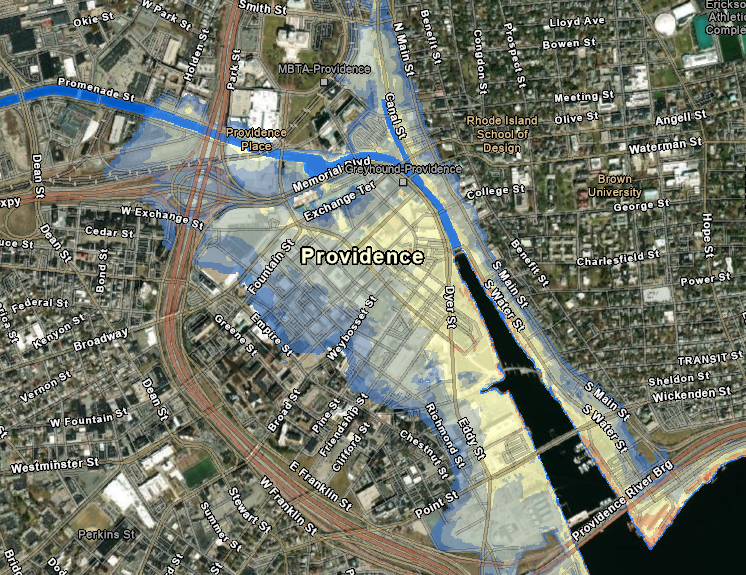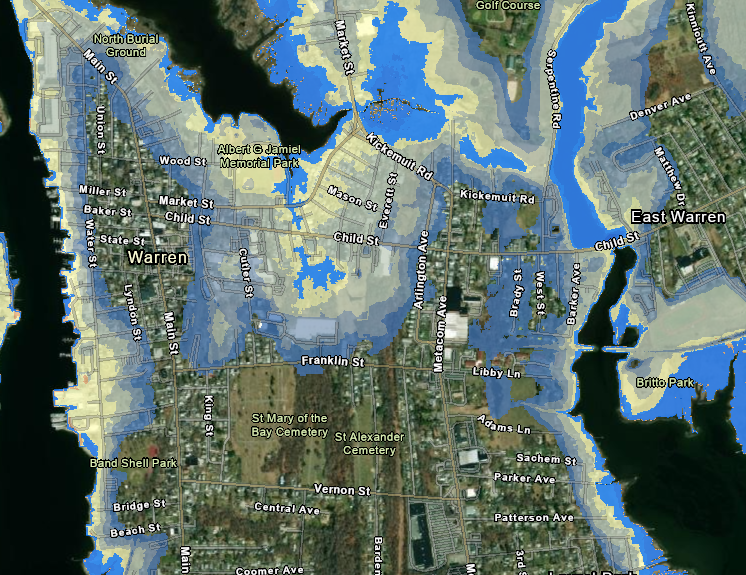Global Warming Likely to Bring Climate Chaos to Ocean State
November 11, 2022

The Earth is on a “highway to climate hell.”
That’s the message coming out of the COP27 climate summit under way in Sharm el-Sheikh, Egypt, as world leaders and diplomats engage in talks to attempt to halt the disastrous effects of climate change. Despite decades of annual talks and negotiations, world leaders said the distinct lack of progress in reducing greenhouse gas emissions spelled grim news for the future of humanity.
“The clock is ticking, we are in the fight of our lives,” said United Nations Secretary-General António Guterres in his opening remarks. “And we are losing. Greenhouse gas emissions are growing, global temperatures keep rising, and our planet is fast approaching tipping points that will make climate chaos inevitable.”
Global temperatures have already risen 1.1 degrees Celsius compared to pre-industrial levels, and much of the conference talks are expected to center on how to limit warming to 1.5 degrees Celsius.
A global greenhouse gas emissions inventory released this month by the Climate TRACE coalition revealed global emissions from oil and gas production were “significantly underreported,” and countries required to report emissions data regularly to the United Nations have emissions as much as three times higher.
The coalition’s data was gathered from more than 300 satellites, some 11,000 air, land, and sea sensors, and from troves of additional public information. Climate TRACE is a nonprofit composed of AI specialists, data scientists, researchers, and non-governmental organizations dedicated to refining climate-emissions data.

Time is running out. The U.N.’s Intergovernmental Panel on Climate Change released its latest climate change mitigation report earlier this year, warning that greenhouse gas emissions were at their highest levels ever, and countries need immediate and deep cuts in emissions in order to limit global warming to 1.5 degrees Celsius. The assessment showed that limiting warming to 2 degrees Celsius requires emissions to be reduced by 25% by 2030.
Thanks to a lack of reduced emissions, the climate change impacts on coastal states such as Rhode Island would be enormous. The National Oceanic and Atmospheric Administration (NOAA), in a report released earlier this year, said it is expecting at least 2 feet of sea-level rise along the U.S. coastline between now and 2100. If worldwide emissions aren’t curbed, there could be an additional 1.5 to 5 feet of sea-level rise by the end of the century.
“By 2050, moderate flooding — which is typically disruptive and damaging by today’s weather, sea level and infrastructure standards — is expected to occur more than 10 times as often as it does today,” said NOAA National Ocean Service director Nicole LeBoeuf in a press release. “These numbers mean a chance from a single event every 2-5 years to multiple events each year, in some places.”
Two feet of sea-level rise would radically transform the coastline, but inside Narragansett Bay and along the state’s south shore, Rhode Islanders can expect more. As the planet warms, Atlantic storms will get stronger and more frequent, and some municipalities across the state may find themselves underwater.
The state’s coastal flooding prediction tool, STORMTOOLS, shows that with 2 feet of sea-level rise and a once-in-a-century storm vast portions of Warren, Barrington, and Bristol will be inundated.

Warren’s downtown is less than 20 feet above sea level, and parts of the town today already experience regular nuisance flooding. The town’s Market Street area will see 356 properties flooded and 57 housing units lost for a total of 86 displaced residents, according to projections. The corner of Market and Redmond streets would flood daily, and cost $8.1 million to repair in today’s dollars.
“We’re not here to scare people,” Warren town planner Bob Rulli said last year. “These are realities.”
The town plans to shift homes and businesses in the Market Street area further south toward Metacom Avenue, which is planned to be redeveloped into a mixed-use neighborhood.
It’s not just the East Bay. Under similar storm conditions most of Charlestown’s south shore, including the state beaches at the breachway and the town beach, will be 16 feet underwater following a once-in-a-century storm. Prospects are similar for downtown Providence, with areas close to the river ranging from Providence Place mall to the Port of Providence also predicted to be inundated with more than 12 feet of water, according to STORMTOOLS.
And Rhode Island may be better off than most developing nations. Reuters recently reported that developing nations will need up to $1 trillion a year for external financing as many of those nations face the brunt of a warming climate.
U.S. climate envoy John Kerry proposed allowing companies to buy carbon credits to fund the greening of power grids in developing countries. Wealthy nations such as the United States face increasing pressure to make good on their previous promise to mobilize $100 billion for climate resiliency for the Global South.
COP27 runs until Nov. 18.
Categories
Join the Discussion
View CommentsYour support keeps our reporters on the environmental beat.
Reader support is at the core of our nonprofit news model. Together, we can keep the environment in the headlines.
We use cookies to improve your experience and deliver personalized content. View Cookie Settings



